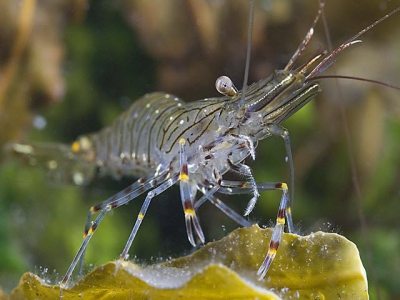Shrimp diseases - Blackening of gills ( black death disease)

Only one nutritional-disease syndrome of cultured penaeids has been described in detail. This disease, called black death or shrimp scurvy occurs in penaeids that are reared in culture systems lacking algae and receiving diets with insufficient ascorbic acid. Shrimp with black-death disease possess melanized hemocytic lesions in the epithelial and supportive connective tissues in the epithelial and supportive connective tissues of the general-body cuticle, the foregut and hindgut, the eyestalks and the gills. The lesions are most prominent in tissues with a high-collagen content. Addition of L-ascorbic acid to the shrimp’s ration or rearing shrimp in the presence of algae effectively prevents black death disease.
Shrimp fed a diet low in or without added L-ascorbic acid, developed blackened lesions (after 6 to 8 weeks in the subcuticular tissues of the general body surface, in the walls of the esophagus, stomach and hindgut and in the gills and gill cavity. Once clinical signs of the disease became apparent, affected shrimp ceased feeding and death usually followed within 24 to 72 hours. Opportunistic bacteria such as Vibrio spp. and Pseudomonas spp. often produced a terminal septicemia in affected shrimp. Mortalities of 1 to 5% per day due to this disease were observed on several occasions. Histopathology showed the blackened lesions to be, composed of masses of hemocytes and necrotic tissue. The black pigmentation of the lesions was due to melanin deposited in areas of heavy hemocyte infiltration, particularly near the centers of developing hemocyte nodules. No parasites or bacteria could be demonstrated in the centers of these nodules.
A number of disease syndromes of cultured penaeids are also accompanied by the presence of black (melanized), inflammed lesions in the gills. In fact, black gills may be a sign of toxic syndromes caused by chemical irritants including certain heavy metals, oils, ammonia, nitrite and ozene.
Có thể bạn quan tâm
 Mineral extract reduces EMS, WSSV impacts in Pacific white shrimp
Mineral extract reduces EMS, WSSV impacts in Pacific white shrimp Some antimicrobial compounds appear to disrupt bacterial communication that activates genes associated with release of toxins
 Shrimp diseases - Cramped Tail Condition
Shrimp diseases - Cramped Tail Condition This occasionally observed condition of penaeid shrimp has been reported to occur in the summer months when both air and water temperatures are high.
 Microsporidian impacts shrimp production
Microsporidian impacts shrimp production Enterocytozoon hepatopenaei (EHP), a microsporidian parasite that has been widely found in Asia and other parts of the world, is impacting aquaculture productio